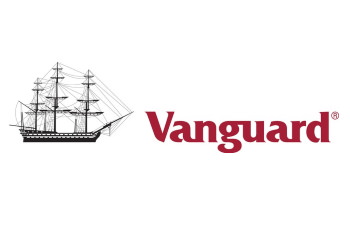If you’re a young investor, the need for personalized management and advice can hardly be overemphasized.
Although a robo-advisor would work like a dream if you prefer automated management of your portfolio. What if that automation could work in tandem with actual human advisors? This is where Vanguard’s Personal Advice Service comes in.
What is the Vanguard Personal Advisor Service?
 These services reallocate your assets automatically, should they deviate from the selected threshold (usually with a tolerance of 5%). With an account that is subscribed to the service, live financial advisors provide you with personalized advice for your unique situations. They actively review your portfolio.
These services reallocate your assets automatically, should they deviate from the selected threshold (usually with a tolerance of 5%). With an account that is subscribed to the service, live financial advisors provide you with personalized advice for your unique situations. They actively review your portfolio.
Thanks to the $120 billion assets Vanguard Personal Service Advisor manages, they’re among the largest robo advisors. But obviously, Vanguard has a certain edge over its competition because it provides its investors access to certified financial advisors.
But what makes Vanguard different from, say, a traditional financial advisor? The answer is the fees.
Where a conventional advisor will charge you at least 1%, you only have to pay Vanguard 0.3%. But there’s a catch. Your account size has to be a minimum of $50,000 for you to be eligible for this service – more on that in a moment.
They support trusts, SEP IRAs, Roths, rollovers, traditional accounts, and trust accounts. And advisors create individual portfolios. They also rebalance and review the trades, if need be.
Here’s a quick overview of how the services work.
If you’re investing $500,000 or more, you get a dedicated financial planner assigned to your account. But for a $50,000 minimum, you’ll get a team. One of them will devise a financial plan depending upon your specific income requirements, goals, and investments. In doing so, every client gets their very own customized plan.
Once this groundwork has been laid, the Vanguard advisor will craft for you a portfolio, and they will monitor it for future developments. But it can take up to three weeks for the advisor to formulate a working plan. And you’ll have to wait till you get your appointment. Only after the advisor has consulted with you will they start working on your portfolio.
You don’t have to pay Vanguard a dime if you’re not satisfied with the financial plan formulated for you. You’ll only pay an annual fee if you decide to go with the plan.
Your portfolio will mostly contain either index funds or actively managed ones. But if you want liquidity, you can also opt for money market funds. These funds often have the lowest expense ratios in the market.
To keep the portfolio in line with the previously mentioned goals and requirements, the advisor reviews your portfolio and rebalances it regularly.
Although the portfolio is being managed for you, you can view the progress or your investments via their smartphone app or the dashboard. The dashboard has a fairly straightforward design, and it gives you access to financial tools, calculators, as well as some educational resources.
The advisors will mostly suggest and include low-cost funds in your portfolio so that you can maximize your savings and minimize the fees.
Aside from your Vanguard investments, your advisor will also inquire about your other accounts to get a complete picture of your financial status. They can dispense comprehensive advice and manage your assets more effectively.
The advisor doesn’t work alone; their portfolio management program does most of the legwork by keeping track of the allocated assets and its course.
You can pick from 100 different mutual funds and ETFs depending on your investment objectives, with expense ratios ranging from anywhere between 0.04%-0.14%.
But it doesn’t end there. If you’ve invested in Vanguard in the past, you’re probably familiar with their Admiral funds. These funds have much lower fees, even lower than their regular ETFs. But you’re asked to invest a minimum of $10,000. And that’s true for every fund. But when you opt for Vanguard Advisor, this minimum is waived. So you can access all of Admiral Class shares.
You also receive a progress report every quarter. And if you have any questions, you can contact their certified planners five days a week from 8 a.m. to 8 p.m. They’re available via email, phone, and even videoconferencing.
Key features
- $50,000 account minimum
- 0.30% in fees if you have less than $5 million in your account balance (it tapers off as your account balance increases)
- Expense ratios: 0.04
- Account support: Non-retirement accounts, trusts, Roth, Traditional, Rollover, SEP IRA
- Automatic portfolio rebalancing
- Hybrid advisor option in the form of automated and live advisors
- Quality simulators, calculators, retirement planners, and some educational resources
- Advisors available via phone, email, or video chat
Who Is It For?
If you’re looking for a robo-advisor that combines portfolio management algorithms with actual, human, financial advisors, Vanguard is the best bet. Vanguard’s professional advisors plan out and execute strategies based on your financial objectives and goals. If you have a high balance account and you’re looking for comprehensive plans, reviews, rebalancing, and guidance, your money will be in excellent hands with Vanguard Advisors.
Even if you’re a seasoned investor, and you think you can make do without financial guidance from experts, the second set of eyes can’t hurt. And if you’re a novice, the advice from professionals can prove to be invaluable.
As opposed to a traditional advisor, this service is online. You can get your investments managed without making a trip to their office, paying them 1%, or having to make an appointment beforehand.
Pricing
For Vanguard Advisor Services, you’ll be annually charged a fee of 0.3% in addition to the expense ratio of the ETFs and mutual funds you invest in. Although these expense ratios are generally very low, you’re in a sense being charged twice. You also don’t get a discount if you make a higher deposit, which many of their competitors offer.
As for the 0.3% fee, it is not the lowest in the robo-advisor space either. For comparison, Wealthfront will cost you 0.25% in management fees annually. Some robo-advisors don’t charge any management fees at all. But granted, these services aren’t hybrids like Vanguard, so the comparison here isn’t exactly fair.
In contrast, Betterment is a hybrid advisor. It’s the same as Vanguard except they charge a hefty 0.40% as a flat fee. And you need a minimum investment balance of $100,000 to qualify. But if you’re looking for a cheaper hybrid option, there’s also Schwab Advisory, which charges you a flat 0.28% management fee, and you need a $25,000 balance to be eligible.
Pros
- The advisors mostly include low-cost funds in your portfolio, which boosts your savings but slashes the expenses.
- If the rate deviates from 5%, Vanguard reallocates your assets and rebalances your portfolio to maintain the course.
- Without paying the steep minimum, Vanguard Advisors offers you free access to its Admiral share versions of mutual funds.
- You get a team of professional human advisors who provide you with valuable insight, guidance, and personalized advice. They help you make more informed and better investment decisions.
- The advice dispensed is comprehensive since you can seek counsel regarding your non-Vanguard accounts as well.
- With a flat-fee of 0.30%, Vanguard charges a fraction of what you’d pay your traditional advisor.
- With their app, you can keep an eye on your progress, your investments, and portfolio.
- You can also make changes your goals and investment objectives as you deem fit.
- Every quarter, you receive a transcript of your conversations with the advisor, as well as a progress report.
- The investment plan formulated especially for you doesn’t cost you a penny.
- The advisors will help manage your taxes.
Cons
- If you’re a beginner investor, chances are you can’t meet their steep $50,000 minimum requirement.
- You can’t meet your financial advisor in person because all the correspondence takes place either online or via phone.

Leave a Reply